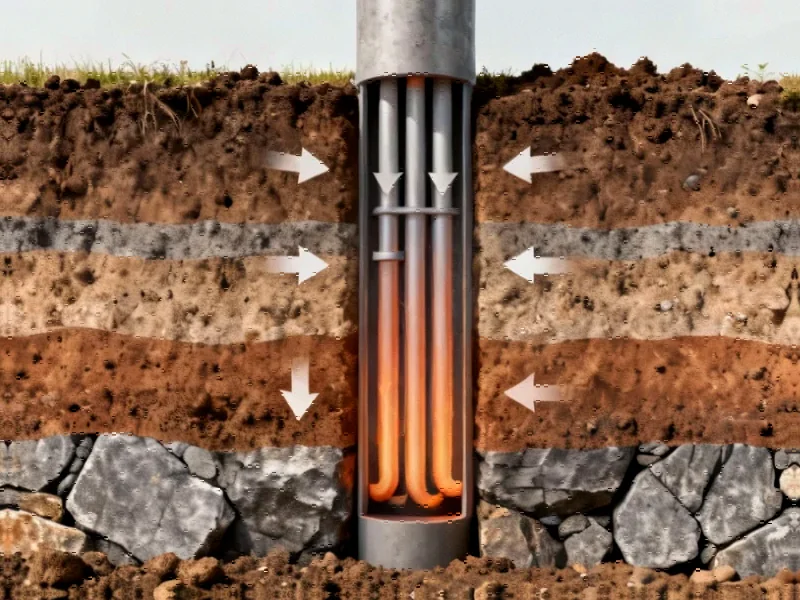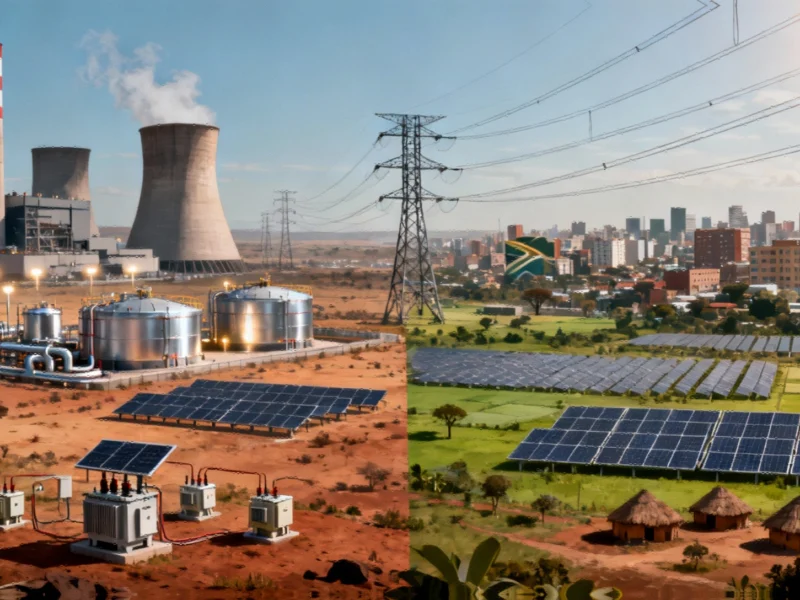Comprehensive Geothermal Data Release
Researchers have published four extensive datasets documenting the thermal behavior of a planar trench geothermal collector, according to reports from the scientific team. The data spans multiple testing periods between 2022 and 2024, capturing both heating and cooling operations that sources indicate could significantly advance geothermal energy technology.
The published information includes detailed measurements from thermal response tests conducted with constant heat injection rates, as well as a cooling experiment where heat was extracted from the ground. Analysts suggest this comprehensive data collection represents a major step forward in understanding subsurface thermal dynamics for renewable energy applications.
Experimental Methodology and Data Collection
According to the technical documentation, the first three datasets involved thermal response tests with constant heat injection rates ranging from 0.88 kW to 1.54 kW. The report states that researchers used a monoethylene-water mixture of 41.5% as the heat transfer fluid, with volume flows carefully controlled between 0.35 m³/h and 1.00 m³/h during different testing phases.
The fourth dataset documented a cooling experiment where heat extraction occurred at approximately -0.7 kW. Sources indicate that temperature monitoring employed multiple technologies, including PT 100 sensors, fiber-optic distributed temperature sensing, and thermistors within moisture sensors. The extensive sensor network provided detailed spatial temperature mapping around the collector installation.
Advanced Measurement Technologies
Temperature measurement utilized sophisticated calibration procedures and high-precision instrumentation, according to the technical specifications. The PT 100 sensors were calibrated using specialized equipment within the range of -5°C to 30°C, with correction factors applied to ensure measurement accuracy.
The research team employed distributed temperature sensing using fiber-optic cable technology that analyzed Raman backscattering signals to determine temperature variations along the entire cable length. This approach enabled continuous temperature profiling across the experimental site, capturing detailed thermal behavior during both heating and cooling cycles.
Data Accessibility and Research Applications
All four datasets are freely available through Zenodo repositories, providing open access to researchers worldwide. The published data includes:
- April 28 – May 3, 2022 dataset featuring 0.88 kW heat injection
- February 28 – March 6, 2023 dataset with 1.51 kW heat injection
- April 6-13, 2023 dataset documenting 1.54 kW heat injection
- May 2-12, 2024 dataset capturing cooling operation
The research team followed standardized measurement protocols according to DIN specifications, ensuring consistency and reliability across all datasets. Sources indicate that the comprehensive nature of this data release will support validation of geothermal system models and contribute to improved design methodologies for shallow geothermal energy systems.
Industry Implications and Future Research
The detailed thermal behavior documentation comes amid broader industry developments in energy technology and growing interest in renewable energy sources. As geothermal energy gains attention as a sustainable heating and cooling solution, this data provides crucial empirical evidence for system optimization.
Technical experts note that the inclusion of both heating and cooling operation data offers unique insights into system behavior under different operational modes. The research coincides with other related innovations in energy technology and monitoring systems that are transforming how we understand and utilize subsurface thermal properties.
While the primary focus remains geothermal energy applications, the measurement methodologies and data analysis techniques could influence broader market trends in environmental monitoring and energy system design. The research team’s attention to measurement accuracy and comprehensive data documentation sets a new standard for geothermal energy research according to industry observers.
This article aggregates information from publicly available sources. All trademarks and copyrights belong to their respective owners.
Note: Featured image is for illustrative purposes only and does not represent any specific product, service, or entity mentioned in this article.



